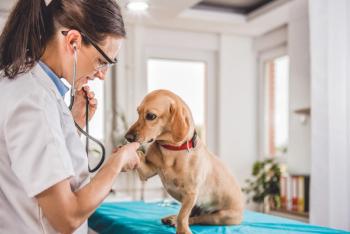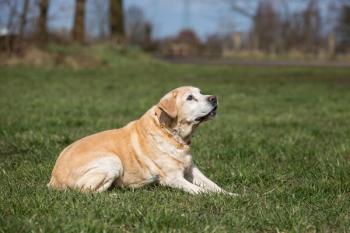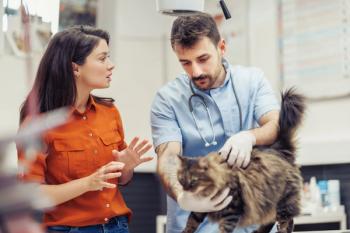
Good will could sweeten the deal
The value of good will is purely a function of what the buyer is willing to pay and what the seller is willing to accept.
When veterinary practices are appraised, some dollar amount often is applied to good will. What exactly does that term mean, and how is the value of it calculated? What factors must exist to make good will a significant item?
Charles E. Gardner DVM, MBA, Dipl. ABVP
When anyone buys a business, they are purchasing some type of asset or assets that can be used to generate income and profit. These assets can be tangible, such as a building, equipment or inventory; semi-tangible, such as a client list or records; or non-tangible, which is the category under which good will falls. The term really refers to the likelihood that existing customers possess good will toward the business, and therefore are likely to continue to use it.
The value
Good will is most valuable when a change in ownership does not alter the product being sold. Therefore, a McDonald's franchise has a great deal of value associated with good will because customers don't care who owns it as long as the food and service do not change as a result of the sale. In veterinary medicine, the same principle applies. Good will carries a lot of value with a small-animal practice at a favorable location, a stable lay staff and multiple doctors who will not change if ownership changes. If all this is true, then customers are likely to continue to use the practice if it is sold because the products/services they receive do not change.
The opposite extreme is a single doctor sells a specialty practice where the doctor's skills are the primary product, which will be replaced by the purchaser. I know of one situation where a reproductive practice was sold when the solo owner retired, and the new doctor found that many clients immediately switched to local practitioners for reproductive work. Once the former owner left, the product was not the same. Therefore, clients had little incentive to use the new owner instead of local veterinarians. I was one of the local veterinarians.
Providing the tools
Now, let's shift our focus for a moment. When a veterinarian wishes to begin practice, he or she can venture out on his or her own, join an existing practice or buy one. If the doctor lacks funds or experience, then he or she usually joins an existing practice as an employee. This means the practice provides support in the form of a vehicle, inventory, equipment, lay staff and experience. The employed doctor draws a salary and accepts less profit in return for the support provided by the employer.
As the new doctor gains experience, he or she also develops relationships with clients and eventually gains some personal good will. Eventually the new doctor may reach the point where he or she no longer needs the employer, and could leave, taking clients with them. For this reason, employers usually require a non-compete clause in an employment contract. The inclusion of this clause is proof that the owner recognizes that good will is related to actions of individual doctors.
When any business is purchased, the buyer really is obtaining the opportunity to reap future profits. For a veterinarian buying a practice, the value is directly related to how much more he or she can make as the owner compared to being an employee or starting up his or her own practice. Good will can be reflected in the price if expected income from the established practice exceeds what could be reaped from the two alternatives.
The method of actually establishing a dollar value on a practice is to project, as accurately as possible, the cash flows that the buyer will receive after purchase. These cash flows are then discounted to reflect timing, inflation, interest rates, risk and, in some cases, opportunity cost. Risk reflects the fact that the future cash flows are not certain. The less certain they are, the larger the risk factor. The more tangible assets involved, the lower the risk factor because tangible assets can always be sold if the business should fail. If no tangible assets are involved, then the risk factor becomes very significant.
Case in point
As an example, let's assume that an experienced veterinarian in dairy practice can earn $80,000 as an employee, and benefits push the total compensation package to roughly $100,000. He or she is considering buying a solo practice where the current owner is netting $150,000. Tangible assets include a vehicle, drug inventory and some equipment. Fair market value of tangible assets equals $75,000.
As an owner, the veterinarian will have management responsibilities and should expect some additional income to offset these duties. Five thousand dollars per year might be reasonable. The purchasing doctor also needs some return on his or her $75,000 invested in tangible assets. At 10 percent, this equals $7,500 per year. So far, the doctor buying the practice needs $100,000 to replace salary and benefits available as an employed veterinarian plus $5,000 for management, plus $7,500-return on investment of tangible assets. This comes to $112,500.
Because the practice is netting the current owner $150,000, he or she is receiving what can be termed excess profits compared to fair compensation for his or her time and investment. These excess profits are the basis of good will. It simply means that the existing owner has managed the business in such a way that it is generating considerable revenue over and above what would be considered adequate compensation. Subtracting $112,500 from $150,000 leaves $37,500 coming from good will.
An annual cash flow of $37,500 has value. If it carried little risk, we simply could divide it by current interest rates of, say, 5 percent and obtain a figure of $750,000. That is to say, we might be willing to pay $750,000 for a very safe investment that returned $37,500 a year indefinitely.
Perception is everything
Good will in this case is far from a sure thing. Clients might not perceive that the new doctor is as valuable as the previous one. Another veterinarian could move into the area and start a competing practice. Therefore, the rate of return must be higher, perhaps as high as 50 percent. If we use this figure, then the value of good will is $75,000.
In the final analysis, the value of good will is purely a function of what the buyer is willing to pay and what the seller is willing to accept. The guidelines in this column should help both parties understand the concepts that go into determining what it is worth.
Newsletter
From exam room tips to practice management insights, get trusted veterinary news delivered straight to your inbox—subscribe to dvm360.






